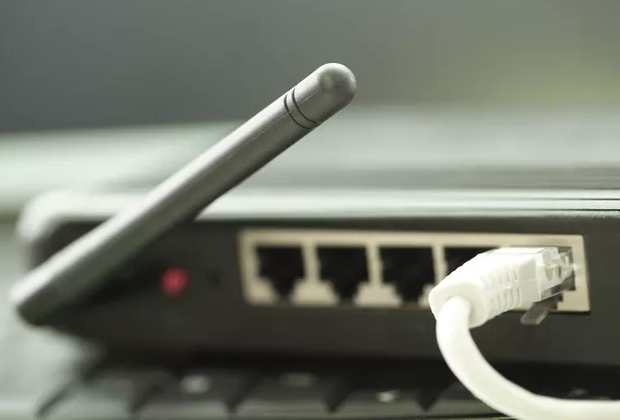Wi-Fi Site Surveys, Analysis, Troubleshooting runs on a MacBook (macOS 11+) or any laptop (Windows 7/8/10/11) with a standard 802.11be/ax/ac/n/g/a/b wireless network adapter. Read more about the 802.11be support here.
Everything You Need to Know About 802.11ac
Are you shopping for a new WiFi router or some other device with wireless connectivity? Then you’ve probably noticed that some products support something called 802.11ac, while others don’t.
In this article, we explain what 802.11ac is to help you make the best purchasing decision. And if you’re not shopping for a new WiFi router, then you’re more than welcome to keep reading as well.
What Is 802.11ac?
802.11ac is a wireless networking standard. More specifically, it’s the fifth generation of the IEEE 802.11 set of protocols for implementing wireless local area network (WLAN) computer communication.

The 802.11ac standard was released in 2014 to provide high-throughput wireless local area networks on the 5 GHz band. The comparison table below shows how 802.11ac WiFi stacks up against other WiFi standards that came before and after it:
| Generation | Wi‑Fi 7 |
| IEEE Standard | 802.11be |
| Maximum Throughput (Mbit/s) | 40,000 |
| Released | 2024 |
| Frequency Band (GHz) | 2.4/5/6 |
| Generation | Wi‑Fi 6E |
| IEEE Standard | 802.11ax |
| Maximum Throughput (Mbit/s) | 600 to 9,608 |
| Released | 2020 |
| Frequency Band (GHz) | 2.4/5/6 |
| Generation | Wi‑Fi 6 |
| IEEE Standard | 802.11ax |
| Maximum Throughput (Mbit/s) | 600 to 9,608 |
| Released | 2019 |
| Frequency Band (GHz) | 2.4/5 |
| Generation | Wi‑Fi 5 |
| IEEE Standard | 802.11ac |
| Maximum Throughput (Mbit/s) | 433 to 6,933 |
| Released | 2014 |
| Frequency Band (GHz) | 5 |
| Generation | Wi‑Fi 4 |
| IEEE Standard | 802.11n |
| Maximum Throughput (Mbit/s) | 72 to 600 |
| Released | 2008 |
| Frequency Band (GHz) | 2.4/5 |
| Generation | Wi‑Fi 3 |
| IEEE Standard | 802.11g |
| Maximum Throughput (Mbit/s) | 6 to 54 |
| Released | 2003 |
| Frequency Band (GHz) | 2.4 |
| Generation | Wi‑Fi 2 |
| IEEE Standard | 802.11a |
| Maximum Throughput (Mbit/s) | 6 to 54 |
| Released | 1999 |
| Frequency Band (GHz) | 5 |
| Generation | Wi‑Fi 1 |
| IEEE Standard | 802.11b |
| Maximum Throughput (Mbit/s) | 1 to 11 |
| Released | 1999 |
| Frequency Band (GHz) | 2.4 |
| Generation | Wi‑Fi 0 |
| IEEE Standard | 802.11 |
| Maximum Throughput (Mbit/s) | 1 to 2 |
| Released | 1997 |
| Frequency Band (GHz) | 2.4 |
As you can see, 802.11ac is the successor to 802.11n. The biggest difference between the two WiFi standards as far as end-users are concerned is the fact that the newer standard supports a maximum throughput of up to 6,933 Mbit/s. That’s a huge jump from 600 Mbit/s, a maximum throughput supported by 802.11n.
802.11ac Device Support
802.11ac only works in the 5 GHz frequency band, but that doesn’t mean 2.4 GHz devices are not compatible with it. All wireless ac devices are backwards compatible with previous WiFi standards, so they can serve and be served data even in the 2.4 GHz frequency band.
However, you need to have an 802.11ac router and 802.11ac devices to achieve the benefits provided by the standard, namely superior 802.11ac speeds (more about them in the next section of this article).

Since 802.11ac was released back in 2014, pretty much all new devices are wireless 802.11ac-enabled and support the latest iteration of the standard, called 802.11ac Wave 2.
802.11ac Real-World Speeds
The impressive 802.11ac max speed is accomplished by combining wider WiFi channels with up to eight MIMO spatial streams and high-density modulation, among other things. These and other WiFi 5 features enable much faster speeds than previous generations.
Theoretically, it should be possible to achieve a maximum throughput of up to around 7 Gbit/s (that's with 802.11ac Wave 2 as Wave 1 supports the maximum throughput of up to 1.3 Gbit/s), but that's only when all available channels are used at the same time, and that almost never happens in the real-world.
Why not? Because performance in the real world is affected by everything from signal interference to the physical distance between wireless devices. What's more, not all available Wi-Fi 5 (802.11ac) routers are equally fast. Manufacturers typically specify how fast they are by assigning them different AC numbers, like this:
- AC1200 : combined throughput of 1,200 Mbit/s
- AC1900 : combined throughput of 1,900 Mbit/s
- AC3200 : combined throughput of 3,200 Mbit/s
As a result, typical real-world speeds for 802.11ac Wave 2 range from 200-800 Mbps, depending on factors like distance, interference, and device capabilities. Wave 1 devices typically achieve 100-400 Mbps in practice. While these speeds are significantly lower than theoretical maximums, they still represent a substantial improvement over 802.11n's real-world speeds of 50-150 Mbps.
To achieve the fastest speeds on the Wi-Fi 5 frequency band, we strongly recommend you use a WiFi analytics and troubleshooting app like NetSpot to optimize the placement and configuration of your router.
You can use NetSpot to learn everything you need to know about other WiFi networks in your area, and the tool can even create a detailed coverage map of your own network to reveal all areas of signal weakness.

In addition to 802.11ac, NetSpot works with all standard 802.11a/b/g/n/ac/ax/be wireless network adapters, and it supports 2.4 GHz, 5 GHz, and 6 GHz bands on 20/40/80/160/320 MHz channels. Read more about the 802.11be support here.
802.11ac vs Newer Standards
| Feature | Wi-Fi 5 (802.11ac) |
| Peak Speed | 3.5 Gbps |
| Real-World Speed | 200-800 Mbps |
| Channel Width | Up to 160 MHz |
| Modulation | 256-QAM |
| OFDMA Support | ❌ |
| MU-MIMO | Downlink only |
| Target Wake Time | ❌ |
| Multi-Link Operation | ❌ |
| Latency | ~10-20ms |
| Device Availability | Widespread |
| Typical Use Cases | HD streaming, gaming, and general browsing |
| Feature | Wi-Fi 6/6E (802.11ax) |
| Peak Speed | 9.6 Gbps |
| Real-World Speed | 1-2 Gbps |
| Channel Width | Up to 160 MHz |
| Modulation | 1024-QAM |
| OFDMA Support | ✓ |
| MU-MIMO | Uplink & Downlink |
| Target Wake Time | ✓ |
| Multi-Link Operation | ❌ |
| Latency | ~2-5ms |
| Device Availability | Growing rapidly |
| Typical Use Cases | 4K/8K streaming, smart homes, dense environments |
| Feature | Wi-Fi 7 (802.11be) |
| Peak Speed | 46 Gbps |
| Real-World Speed | 6+ Gbps |
| Channel Width | Up to 320 MHz |
| Modulation | 4096-QAM |
| OFDMA Support | ✓ |
| MU-MIMO | Enhanced |
| Target Wake Time | ✓ |
| Multi-Link Operation | ✓ |
| Latency | less than 1ms |
| Device Availability | Limited but expanding |
| Typical Use Cases | AR/VR, cloud gaming, real-time applications |
The successor to 802.11ac is called 802.11ax, and it comes in two variants: Wi-Fi 6 and Wi‑Fi 6E. The former was released in 2019, and it supports the 2.4 and 5 GHz bands, while the latter was released in 2020, and it adds support for the 6 GHz band. The maximum throughput of 802.11ax is 9,608 Mbit/s.
The newest WiFi standard, 802.11be (Wi-Fi 7), was officially certified by the Wi-Fi Alliance in January 2024, with IEEE ratification completed in September 2024. This latest WiFi standard represents the current WiFi standard for cutting-edge applications, supporting an impressive maximum throughput of up to 46 Gbit/s across the 2.4, 5, and 6 GHz bands.
When comparing 802.11ac vs 802.11ax and newer standards, WiFi 5 has both advantages and disadvantages:
Advantages of 802.11ac:
- Widespread compatibility (most devices from 2014 onward support WiFi 5).
- Lower cost compared to newer standards due to mature technology.
- Excellent performance for most home and office applications.
- Power-efficient for typical use cases.
- Proven reliability with years of real-world deployment.
- All major network scanning software solutions fully support 802.11ac, including NetSpot, which can perform a comprehensive analysis of WiFi 5 and even WiFi 6 and WiFi 7 networks.
Disadvantages of 802.11ac:
- Limited to the 5 GHz band only (though most 802.11 ac routers include 2.4 GHz for backward compatibility).
- Lower maximum speeds compared to WiFi 6 and WiFi 7.
- Less efficient in high-density environments.
- No support for advanced features like Orthogonal frequency-division multiple access (OFDMA) or Target Wake Time (TWT).
- Higher latency compared to newer standards.
It's safe to say that 802.11ac remains highly relevant for many users, even though it no longer represents the newest WiFi standard. Its combination of solid performance, widespread support, and cost-effectiveness all make it a practical choice for environments that don't require the absolute latest new WiFi technologies.
Conclusion
As one of the most commonly used standards today, 802.11ac plays an important role in our increasingly connected lives, so it’s useful to know what it is and how it differs from other WiFi standards. We hope our article has helped you find the answers you were looking for.
Everything About 802.11ac — FAQs
Based on performance alone, the best WiFi standard currently available is 802.11be (WiFi 7) because it offers theoretical speeds up to 46 Gbit/s. However, "best" depends on your specific needs — for most users in 2025, 802.11ax (WiFi 6/6E) offers the ideal balance of performance and device compatibility, while 802.11ac (WiFi 5) remains an excellent cost-effective choice for typical home and office use.
802.11ac doesn’t stand for anything — at least the two letters don’t. The first part (802.11) refers to the IEEE 802.11 set of local area network technical standards for implementing wireless local area network computer communication.
Yes, 802.11ac is fast enough to make even hardcore WiFi users happy. It supports multi-gigabit speeds and technologies like MU-MIMO and beamforming. Because 802.11ac uses the 5 GHz frequency band, it’s less susceptible to interference.
The latest iteration of 802.11ac supports a maximum throughput of up to 6,933 Mbit/s. While the real-world performance of 802.11ac routers and devices is considerably slower, it’s still fast enough for online gaming, HD streaming, and other demanding tasks.
Yes, the 802.11ac standard is limited to the 5 GHz frequency band, but the standard is backwards compatible with older standards, including those that use the 2.4 GHz frequency band.
802.11ac was released in 2014, six years after the release of 802.11n. It uses a host of innovative technologies to deliver superior speeds and coverage, so it’s safe to say that it’s better.
No, 802.11ac is not outdated despite no longer being the current WiFi standard. WiFi 5 continues to deliver excellent 802.11ac speed for most applications, with 802.11ac Wave 2 capable of real-world speeds between 200-800 Mbps.
What's also important is that most devices we all use (computers, smartphones, tablets, smart home gadgets and appliances) still support only 802.11ac, and support for newer standards (802.11ax and 802.11be) is typically limited to higher-end product lines and latest releases.
Yes, when comparing 802.11ac vs 802.11ax, WiFi 6 is technically superior in several key areas. The 802.11ax standard offers higher maximum speeds (9.6 Gbps vs 6.9 Gbps for 802.11ac), better performance in crowded environments thanks to OFDMA, improved power efficiency with Target Wake Time, and support for multiple frequency bands.
However, whether these new WiFi technologies make it "better" for your specific situation depends on your devices, usage patterns, and budget. For many users, the widespread support and affordability of WiFi 5 may outweigh the theoretical performance advantages of newer standards.
